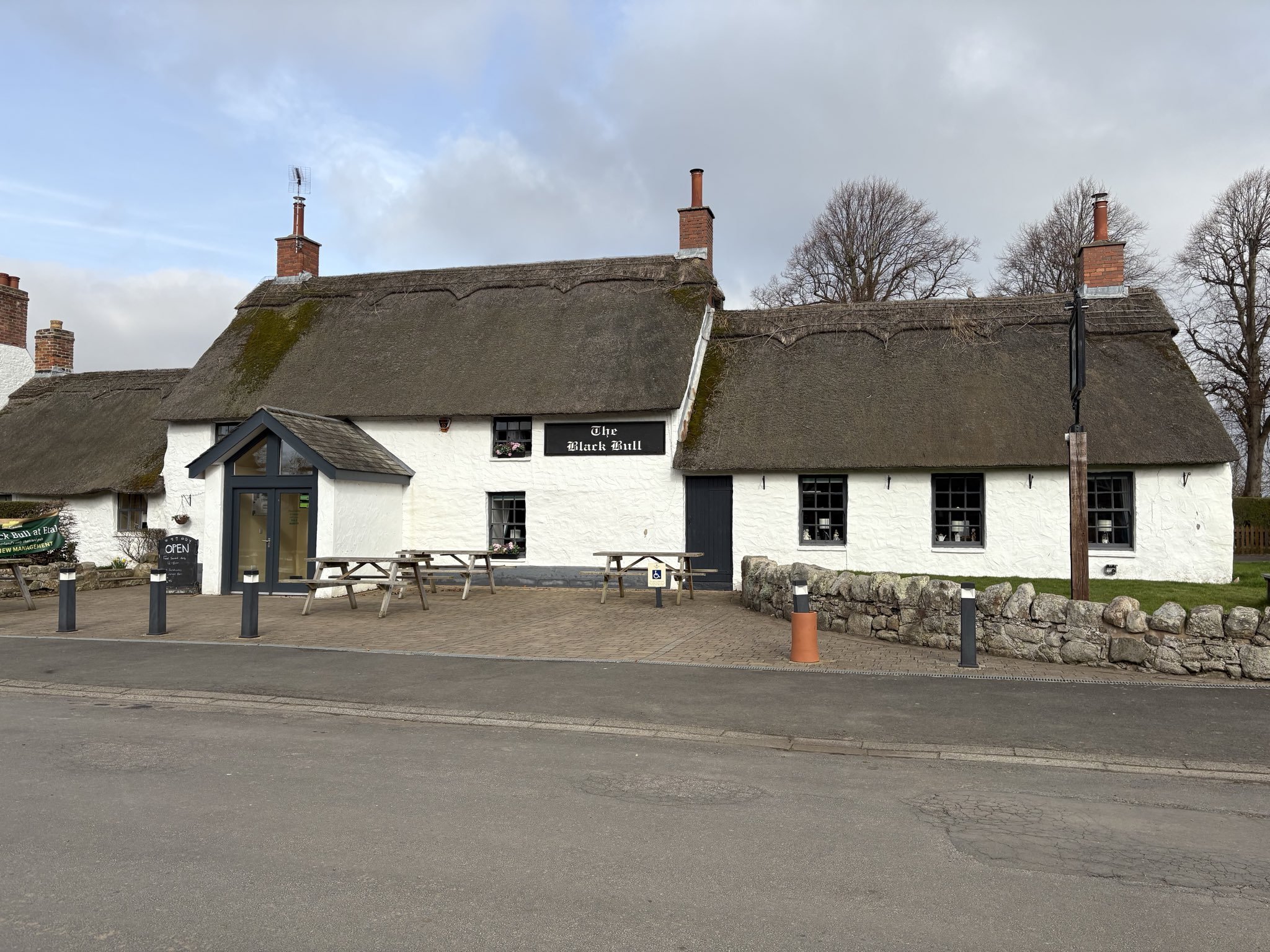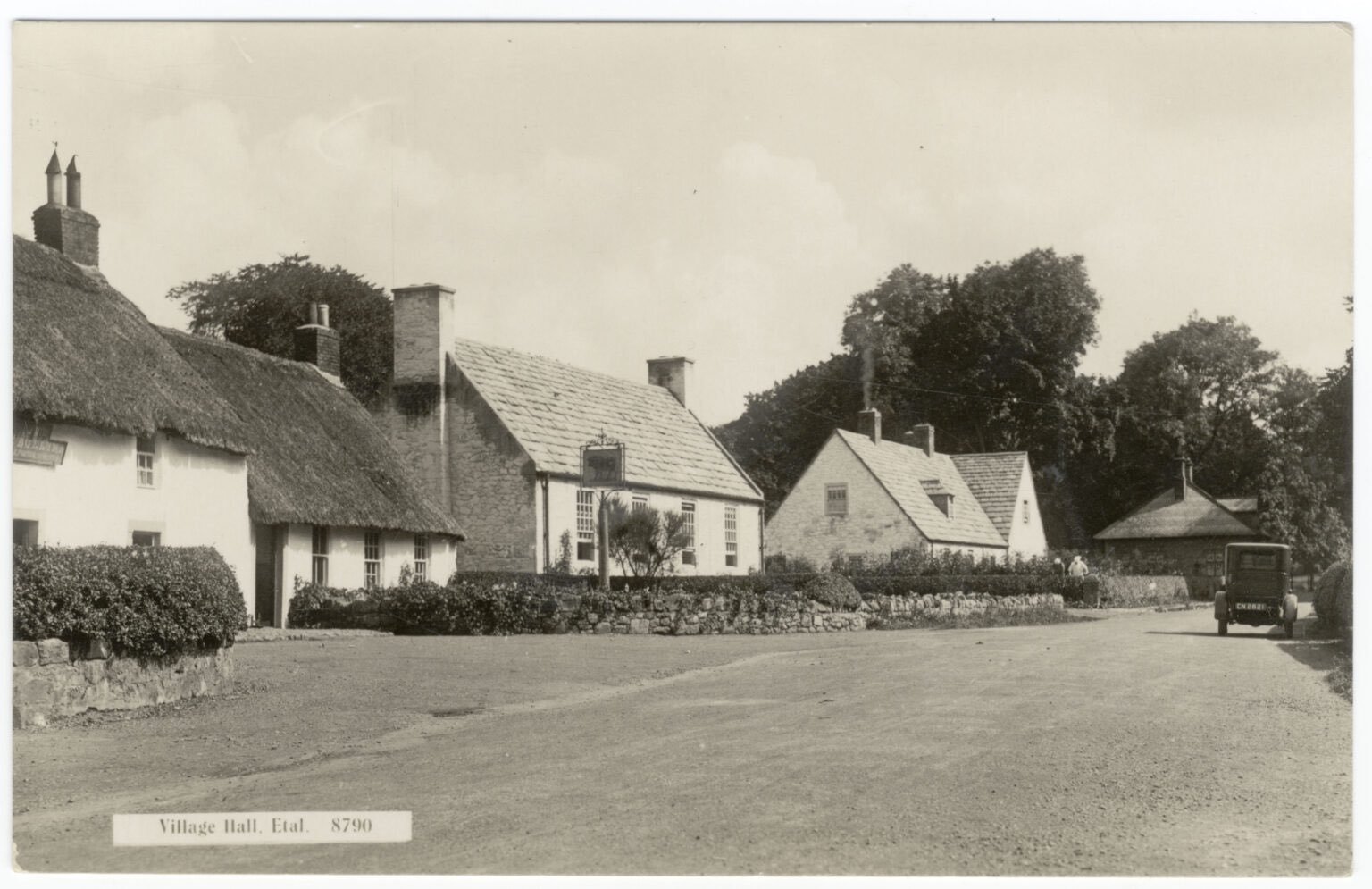
Etal
The Black Bull, Etal
Last Updated:
25 Apr 2025
Etal
This is a
Pub
55.648075, -2.117523
Founded in
Current status is
Extant
Designer (if known):

Still in use as a pub
A reasonable argument that this is one of the most famous pubs in Northumberland, and it is the only one to be thatched for hundreds of miles – The Black Bull at Etal.
Now I try to hold back a bit from internet folklore, especially when some websites state the pub acted as a holding cell for castle prisoners who were awaiting execution. To be honest I don’t even think this building is as old as expected, maybe late 18th century at the earliest. Though I could be well off, with some sources stating it dates back almost 700 years. The lack of listing suggests otherwise, though I'd argue it still warrants it given its status as the only thatched pub in the North East. It was also part of a larger thatched terrace, but the dwellings on its eastern side were demolished well before the village hall was erected.
Our first footprint is in the 1830s newspapers. The first proper reference is in January 1836, when Frederick FitzClarence held a large rabbit-coursing event with greyhounds. There were 100 gentlemen on horseback and at least 500 pedestrians observing the entertainment. Mrs McLeod, our first known publican, provided the spread at Etal Hall. Public dinners were regularly held thereafter, including for the annual “Etal Tillside Gymnastic Games”. Quoits, running, wrestling, archery, hammer throwing, and shooting all took place in the village, with a public dinner held here in the evening.
While operations continued through the second half of the 19th century, it was well used as a site for death inquests in the local area. Many deaths requiring intervention from the county coroner took place here in its “long room”.
The inn went on to become a fully licensed hotel in the early 20th century, and at some stage came to be owned by Berwick Breweries. After a turbulent period over the past decade, it’s been renovated as a modern but fitting asset to the village.
Listing Description (if available)


The Ordnance Surveys of the mid and late 19th century provide a valuable insight into the layout of the village during the Victorian era. Though much remains the same, there are some delicate changes we see across the decades. First and foremost there's subtle repurposing in the village lane, with the post office formerly situated behind the Black Bull which moved into a cottage on the south side and remains there today. Etal Mill was no longer functioning, and Etal Mill was almost entirely demolished by the 1890s. The lodge/gatehouse to Etal House was also constructed between the decades.

The Ordnance Survey of 1924 presents one further significant change - the clearance of the row on the east side of the Black Bull. Unknown to me, the plots were cleared for some reason and later replaced by the village hall. Since then though, the village has remained pretty much intact for a century.

The Black Bull in March 2025

The Black Bull and its modernised porch in March 2025. The three distinct sections make you wonder if this was separate dwellings at some stage, with the central section being a two storey cottage.

The Black Bull can be seen on the left of this postcard from around the 1920s/30s. The Village Hall is also in view just after it opened. Source: Northumberland Archives
